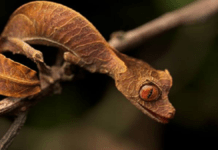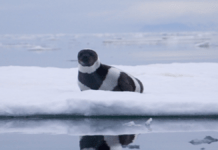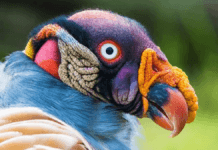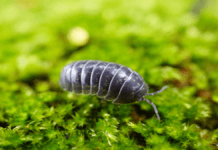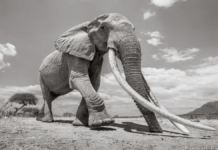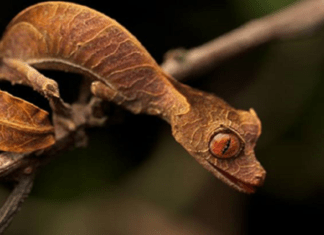Imagine a world where black-and-white reigns, and then suddenly, a splash of yellow bursts onto the scene. This isn’t fiction; it’s the real-life tale of a King penguin with feathers that defy the norm. Wildlife photographer Yves Adams encountered this striking bird on a South Georgia island during a 2019 expedition. Captured against a backdrop of tens of thousands of typical King penguins, this rare yellow penguin was impossible to miss. Amidst his two-month journey through this wild terrain, Adams found himself face-to-face with a creature that seemed to have stepped out of a painter’s canvas.

1. The Discovery of Yellow Penguin
A Vivid Surprise Amongst the Monochrome
On a remote island of South Georgia, an island blanketed with tens of thousands of King penguins, a glint of yellow shone through. Wildlife photographer Yves Adams was there to capture the lives of these creatures when his lens stumbled upon a truly unique sight. Nestled within the vast colony was a penguin unlike any other—an individual adorned with feathers of a soft, sunlit yellow. This was the moment a one-of-a-kind King penguin made its debut before Adams’ camera, setting the stage for a global sensation.
Understanding the Unprecedented
The sheer number of King penguins on the island was overwhelming, each with the species’ signature black and white plumage. Yet, this single yellow penguin’s presence was a phenomenon that defied all statistical expectations. It challenged the odds, drawing immediate scientific curiosity. Within the context of the colony’s sizable population, the discovery of this penguin was akin to finding a diamond in a mountain of coal.
The Photographer’s Swift Response
There was no time to waste. With a practised hand, he began photographing this rare creature, conscious of the significance each snapshot held. His mind raced with the potential impact of these images—the storytelling, the scientific interest they would spark. Adams laboured meticulously, positioning himself to make certain the golden-hued penguin was once the focal point, taking pictures its essence amongst the throngs of its black-and-white counterparts. Each click on of the shutter used to be a cautious orchestration to immortalize this once-in-a-lifetime encounter.

2. Unraveling the Mystery of the Yellow Plumage
The yellow penguin has sparked discussions about leucism, a condition less known than albinism but equally fascinating. Leucism results in reduced pigmentation, which can cause an animal to appear white or, in rare cases, take on a different colour, like yellow. Unlike albinism, which is a total lack of melanin resulting in white colouration and pink eyes, leucism doesn’t affect the eyes. This yellow penguin retains its typical eye colour, indicating leucism, not albinism, might be at play.
Beyond Leucism: Other Theories for the Yellow Tinge
However, the unique yellow hue seen in this penguin could arise from other factors. Diet, environmental influences, or even other genetic mutations could play a role. Some birds’ colours come from the food they eat; flamingos, for instance, get their pink colour from shrimp. Could this penguin’s diet contribute to its unusual colour? The answer isn’t clear, prompting a deeper look into the bird’s lifestyle and habitat.
A Spectrum of Opinions: The Need for Research
Researchers are intrigued but divided on what causes this penguin’s colour. Some suggest it’s a straightforward case of leucism, while others believe it might be something new. This disagreement highlights a gap in perception that can solely be stuffed with complete research. To unravel this mystery, scientists are keen to learn about the penguin further, hoping to analyze now not just why it is yellow but what this capability for our perception of penguin genetics.

3. The Role of Wildlife Photography in Science
Capturing More Than Images: Photography as a Scientific Tool
Wildlife photography does more than provide stunning visuals; it plays a crucial role in scientific discovery. Photographs can document animal behaviours and physical traits that may be unknown or misunderstood. They offer a non-invasive method to observe wildlife, which is vital for conservation. By capturing images like the yellow penguin, photographers like Yves Adams provide valuable data that can lead to new insights into animal genetics and biodiversity.
Expeditions: Windows to Wildlife Wonders
Expeditions are not just adventures; they are critical for documenting the diversity of life. They often lead to the discovery of rare animal occurrences. In areas where scientists cannot always be present, photographers serve as the eyes of the scientific community. The documentation provided by these expeditions, particularly of uncommon events like the sighting of the yellow penguin. It is indispensable for the ongoing efforts to understand and protect our planet’s wildlife.

4. The Life of a King Penguin
The King Penguin: An Antarctic Native
King penguins are the second-largest penguin species and are recognised for their hanging look and sociable nature. They live in the frigid zones of the Antarctic and on sub-Antarctic islands, the place they shape massive colonies on seashores and rocky shores. With their sleek, torpedo-shaped bodies, they are built for swimming, spending long periods in cold southern ocean waters hunting for fish and squid. On land, they are equally majestic, standing tall with a bold splash of orange and yellow on their heads and chests, a stark contrast to their monochrome neighbours.
A Yellow Penguin’s Place in the Colony
The yellow penguin that Adams photographed presents an interesting question: How does its unique colouration affect its interactions with its habitat and fellow penguins? Penguins use their distinctive colours for recognition and socialization. This yellow variant could experience differences in mating, bonding, and even feeding behaviours. Observing how the colony accepts this penguin could offer valuable insights into the social structures of the King and the penguins. And the impact of visual differences on animal behaviour in the wild.
Conclusion
The discovery of the yellow King penguin by Yves Adams is a reminder of nature’s capacity for surprise and variation. The photographs shared with the world serve as a crucial link between wildlife and our understanding of biodiversity. They spur on conversations about conservation and the importance of preserving our planet’s unique inhabitants. As the yellow penguin waddles into the spotlight, it invites us to appreciate and protect the extraordinary diversity of life on Earth.


